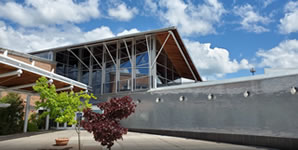The following skills are covered within the Lake Superior College Physical Therapist Assistant Program (Traditional On-Campus Program). An asterisk (*) indicates that student competence with the skill is assessed via skill check and/or practical exam.
Clinical instructors who teach skills not covered in the program are responsible to assess the student’s competence with the skill prior to patient treatment.
1ST Year PTA Students Skills learned Fall Semester
- Hand-washing*
- Transfers* (standing pivot, squat pivot, sliding board)
- Bed positioning* (supine, prone, side-lying front, side-lying back)
- Mechanical lift*
- Bed mobility with draw sheet*
- Fitting gait device*
- Vital signs*
- Tilt table*
- Standing frame*
- Gait training on level surfaces* (2, 3, & 4-point; cane, crutches, walker)
- Gait training on stairs*
- Transporting a patient in a wheelchair*
- Body mechanics*
- Infrared lamp*
- Ultraviolet lamp*
- ICP/bandaging for edema*
- Sensation testing*
- Girth (circumferential measurements)*
- Contrast Bath
- Paraffin bath*
- Cryotherapy*
- Moist heat*
- PROM*
- AAROM*
- AROM*
- UE goniometry*
- UE manual muscle testing*
- LE goniometry*
- LE manual muscle testing*
- Neck and trunk ROM assessment (goniometry, tape measure, CROM device)
- Neck and trunk MMT
- Hand-held dynamometry
- Passive stretching, UE and LE*
- Passive stretching, neck and trunk
- Note: Neck/trunk ROM assessment, MMT and passive stretching assessed via skill check in PTA 1562 as part of spine unit
- Activity analysis
- Hip palpation*
- Knee palpation*
- Ankle and foot palpation*
- Shoulder palpation*
- Elbow palpation*
- Wrist and hand palpation*
- Neck palpation*
- Lumbar and thoracic spine palpation*
An asterisk (*) indicates that student competence with the skill is assessed via skill check and/or practical exam.
1st Year PTA Students Skills Learned Spring Semester
- Manual resistance exercise*
- Mechanical resistance exercise*
- Muscle stretching, active* (reciprocal inhibition, contract relax, contract relax contract)
- Balance and coordination exercises*
- Posture education*
- Circulation exercises
- Aerobic exercise
- Designing and teaching home exercise programs
- Spine exercise protocols
- Post-surgical exercise programs and protocols
- PNF diagonals*
- Data collection – normal gait*
- Data collection – abnormal gait*
- Hip palpation*
- Knee palpation*
- Ankle and foot palpation*
- Shoulder palpation*
- Elbow palpation*
- Wrist and hand palpation*
- Neck palpation*
- Lumbar and thoracic spine palpation*
- Measuring TMJ ROM
- Reflex testing (knee, ankle, elbow)
- Objective flexibility assessment
- Activity analysis
- Activities to improve UE and LE proprioception
- *Aseptic technique*
- Ultrasound – direct contact*
- Phonophoresis*
- Ultrasound – immersion*
- CPM application* (peer check)
- Mechanical cervical traction*
- Mechanical lumbar traction*
- Home traction units* (peer)
- Biofeedback*
- Supportive taping*
- Hydrotherapy, including cleaning whirlpool*
- Dynamic splints (Moveed to PTA 2651 in Fall 2014)
- Short-wave diathermy* (athermal)
- Nerve Gliding
- Joint Mobilization – Peripheral Joint
- Massage*
- STM – Spine*
- STM – Extremities*
An asterisk (*) indicates that student competence with the skill is assessed via skill check and/or practical exam.
2nd Year PTA Students Skills Learned Fall Semester
- Residual limb wrapping*
- Pool therapy
- Body mechanics for work tasks
- Job simulation
- Cardiac rehab
- Postural drainage*
- Chest percussion*
- Breathing exercises*
- Coughing*
- Relaxation techniques
- Therapy ball exercises (was incorporated into PTA 1532 in 2014-15)
- Dynamic splints
- Functional movement data collection
- Facilitation techniques*
- Inhibition techniques*
- Motor learning techniques
- Wheelchair mobility
- Balance assessments (i.e., Berg)
- Balance exercises
- Coma stimulation
- Transfers for rehab diagnoses
- Gait training for rehab diagnoses
- Adult positioning and handling*
- Pediatric positioning and handling*
- Electrode placement*
- TENS*
- D/C & iontophoresis*
- Microcurrent*
- Interferential current*
- High-voltage pulsatile current*
- NMES/FES*
An asterisk (*) indicates that student competence with the skill is assessed via skill check and/or practical exam.

